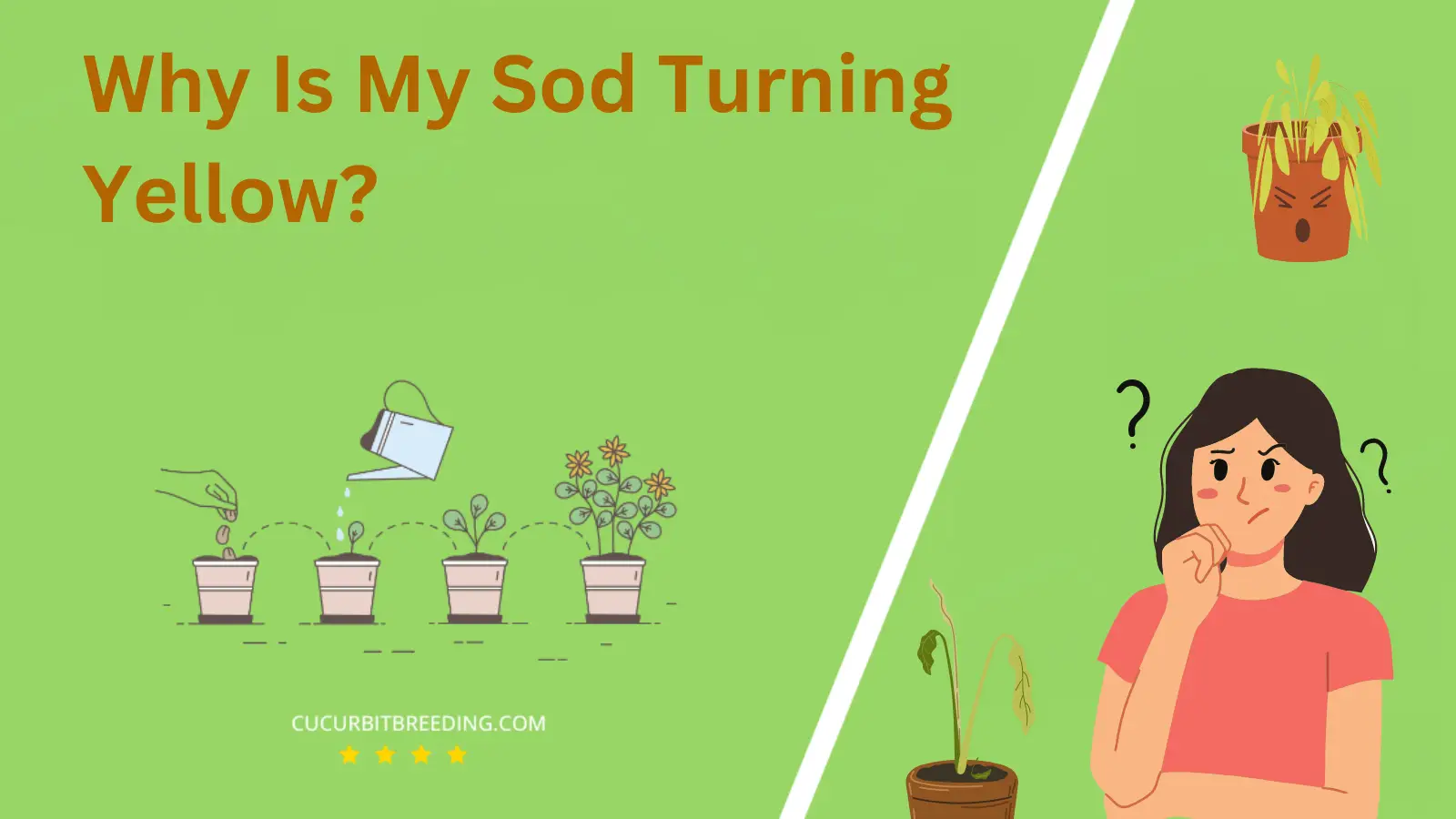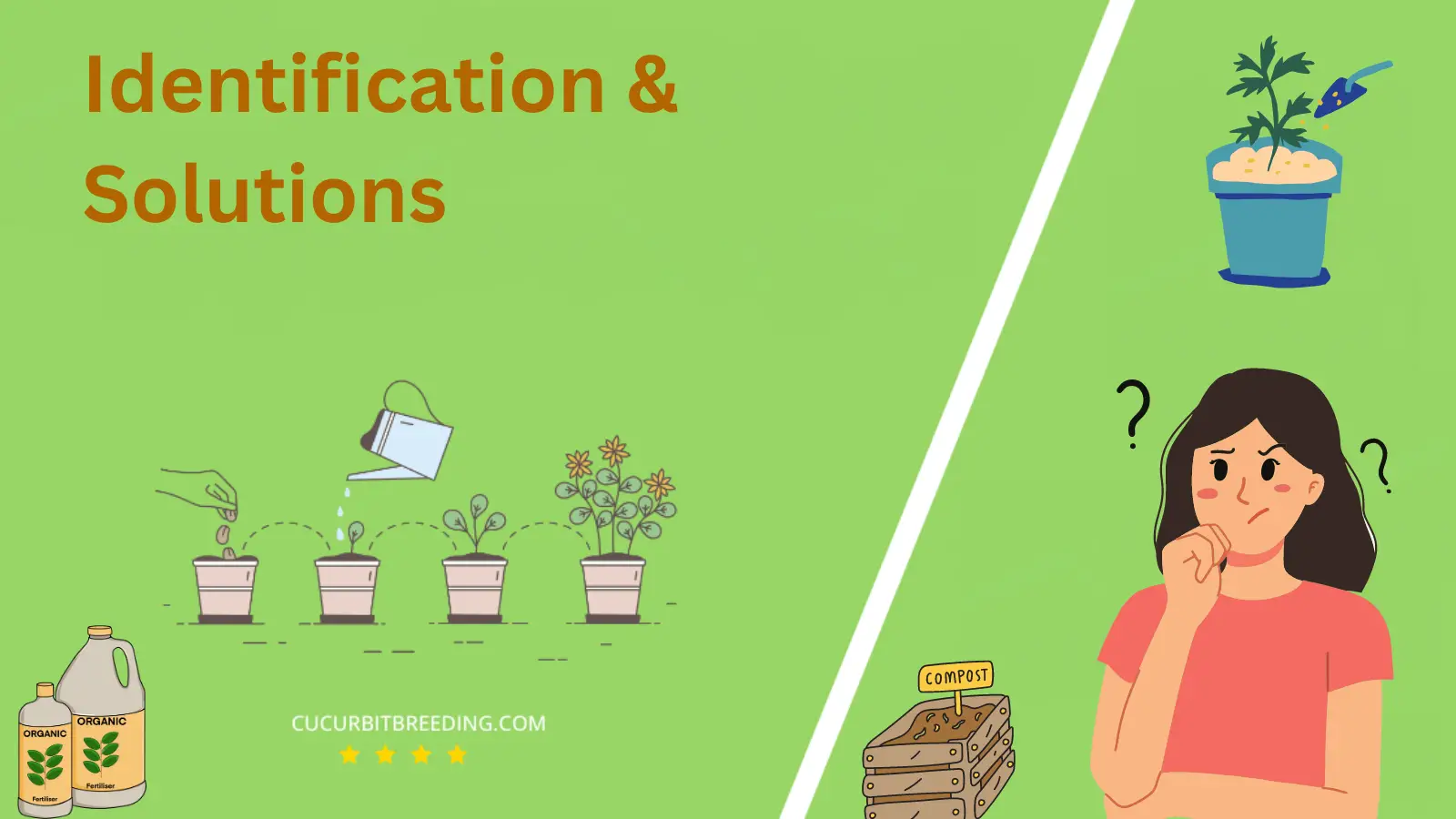
Are you pacing your lawn and asking, “Why is my sod turning yellow?” You’re not alone; this is a common worry for many diligent gardeners. The verdant oasis of a perfect lawn can slowly morph into a bleak landscape, plagued with patches of yellow and brown.
This unwelcome transformation could be triggered by a host of factors, ranging from the apparent to the obscure – but don’t fret! Let’s dig beneath the surface to unearth the root causes of this gardening dilemma.
Why Is My Sod Turning Yellow?
1. Lack of water
| Description | The lack of water causes the leaf to turn yellow due to decreased chlorophyll production. |
|---|---|
| Solution | Water the sod regularly to prevent yellowing. |
Yellowing sod is often a sign of inadequate hydration. Without sufficient water, grass plants can become stressed, causing the chlorophyll (which gives plants their green color) to fade, leaving the yellow pigments visible. This results in the sod turning yellow instead of its normal healthy green color.
To address this, consistent watering is crucial. Make sure your sod gets enough water to penetrate the root zones. Depending on the temperature and weather, watering may need to be done daily in the beginning.
Mulching can also be beneficial as it can help retain the moisture. However, too much water can also be harmful, causing the roots to suffocate and eventually rot, so it’s important to balance the hydration.
Lastly, check if the sprinkler system is distributing water evenly. If certain areas of your sod are not getting sufficient water, they will turn yellow while other areas remain green.
To summarize, inadequate water intake often causes sod to turn yellow. You should consistently water your sod, consider mulching, and ensure your irrigation system is functioning properly to address this issue.
2. Nutrient deficiency
| Description | Lack of essential nutrients causes the leaf to turn yellow, impacting its physiological functions. |
|---|---|
| Solution | Apply a balanced fertilizer to correct nutrient deficiency and restore the sod’s green color. |
Nutrient Deficiency Impact
Nutrient deficiency can cause your sod to turn yellow because plants require an array of specific nutrients to maintain healthy growth and color. Nitrogen, potassium, and iron are the most common nutrients that influence the color and health of your grass. If these nutrients are absent or not absorbed efficiently due to any blockage or poor soil quality, the grass may begin to yield yellow blades.
Nutrient Deficiency Solutions
To rectify the situation, you can apply a high-quality, slow-release fertilizer rich in nitrogen to your lawn. Remember that too much of anything can also be harmful so follow the product’s recommendations. Another way is to improve the soil quality by adding compost, organic materials, or a soil conditioner like gypsum for heavy clay soils. Regular soil testing can help you detect nutrient deficiencies early and correct them timely. If nutrient absorption seems to be the issue, you may also consider liquid iron applications or iron chelates for faster absorption.
3. Overwatering
| Description | Excessive water disrupts root function, blocking nutrient uptake and causing yellowing of the sod. |
|---|---|
| Solution | Reduce watering frequency and allow soil to dry out between waterings. |
Yellowing of sod can be a result of overwatering. When you water your lawn excessively, it deprives the turf of oxygen and promotes the growth of diseases or fungi, contributing to the yellowing.
Solution: It’s essential to adjust your watering routine. Sod usually requires an inch of water per week. Divide it into two or three watering sessions. Use a screwdriver to check the soil’s moisture level. If it goes in easily, it means the ground is adequately moist. In case of severe overwatering, consider aeration to improve oxygen flow.
Furthermore, remember that the watering needs vary depending on the weather conditions, type of soil, and the sod’s growth stage. New sod needs frequent watering, while established sod requires less.
Monitoring your lawn daily can help spot signs of stress early on. Change in color, slower growth, or visible fungus growth are signs to watch out for. When you notice such, adjust your watering schedule. Also, consider consulting with a lawn care professional for more tailored advice.
4. Soil compaction
| Description | Excessive water disrupts root function, blocking nutrient uptake and causing yellowing of the sod. |
|---|---|
| Solution | Reduce watering frequency and allow soil to dry out between waterings. |
Soil compaction is one of the pertinent factors that leads to your sod turning yellow. When soil becomes compacted, the dense soil particles can restrict the flow of water, nutrients, and air, all of which are crucial for the healthy growth of the grass on your sod. This inadequate access to water and nutrients can subsequently cause the grass to turn yellow.
To rectify this issue, an effective solution can be aeration. This refers to the process where small holes are made in the sod using an aerator, helping loosen the soil and improve its structure. This consequently allows for the improved flow of water, nutrients, and air to the grass roots situated within the soil. Additionally, the use of organic matter like compost can also help in improving soil structure. Applying a layer on top of your sod and lightly raking it into the aerated holes ensures a good distribution of the compost into the soil, therefore helping mitigate the compaction problem.

5. Pest or disease infestation
| Description | Reduce watering frequency and allow soil to dry out between waterings. |
|---|---|
| Solution | Apply appropriate pesticide or fungicide to address the potential pest or disease infestation causing yellowing. |
Your sod turning yellow could be due to a pest or disease infestation. Pests such as grubs or chinch bugs may eat the grass roots, while diseases such as fungal infections can cause the blades of the grass to turn yellow.
The first step in dealing with a pest or disease infestation is identifying the cause. Once you know what you are dealing with, you can select the appropriate treatment method. For pests, this may involve applying a pesticide or introducing beneficial insects that prey on the harmful pests.
For diseases, treatment usually involves applying a fungicide or altering the environment to be less hospitable for the disease. For instance, many fungal diseases thrive in wet conditions, so adjusting your watering schedule to allow the grass to dry out between watering can help. In severe cases, it may be necessary to remove the infected sod and replace it with healthy sod. It’s always best to consult with a professional if you’re unsure.
6. Excessive heat or sun exposure
| Description | can cause the chlorophyll in the leaf to break down, resulting in a yellow color. |
|---|---|
| Solution | Provide shade or water the sod more frequently to prevent excessive heat or sun exposure. |
Excessive heat or sun exposure can cause your sod to turn yellow because it stresses out the plant, leading to dehydration and damage or death to the plant tissues. Heat stress occurs when the sun’s intensity results in rapid evaporation, leaving the sod unable to replace moisture quickly enough, causing it to dry out and turn yellow.
To prevent this, it is important to provide adequate watering for your sod. The best time to water is early in the morning, allowing the sod to absorb moisture before the heat of the day. It’s recommended to add at least 1 to 1.5 inches of water to your sod per week. However, during extremely hot periods, you may need to water more frequently or deeper.
Another solution is to apply a sunscreen for plants, also known as anti-transpirant or anti-desiccant, that can help reduce water loss. It’s also important to mow the grass at a taller height during hot periods as the additional leaf surface helps to shade the roots and reduce heat stress.
Lastly, adding a layer of mulch around your sod could help retain soil moisture and protect the sod from extreme temperature fluctuations. Doing this will ensure a more favourable environment for your sod under harsh sunlight.
7. Improper mowing or maintenance practices
| Description | can damage the leaf’s chlorophyll and disrupt photosynthesis, causing it to turn yellow. |
|---|---|
| Solution | Proper mowing height and regular maintenance practices will solve the problem. |
One of the common reasons why sod turns yellow is due to improper watering. Sod requires the right amount of water to remain green and lush. If it’s underwatered, it may not get the required amount of moisture and nutrients it needs to grow and stay healthy, causing it to turn yellow. Overwatering, on the other hand, can lead to fungal diseases that also result in yellowing.
To remedy this problem, ensure that your sod gets the right amount of water. If you’ve been watering your sod sparingly, increase the amount of water incrementally but don’t waterlog it. Ideally, sod should be watered early in the morning when temperatures are lower and evaporation is minimal. However, if you suspect you’ve been overwatering, scale back on watering and ensure the sod has proper drainage.
A healthy sod watering schedule involves giving it around 1 inch of water per week. Split the watering sessions over the week rather than doing it all at once. Remember to adjust the watering depending on the weather. Hot and dry periods may require a bit more water to keep it healthy and green.